
Alert: Recent phishing attempts
Please read important tax updates that took effect for tax years beginning after Dec. 31, 2021.
New 2024 SBIR/STTR Phase I and Phase II funding opportunities posted. Read for more details and for Project Pitch invitation updates.

Medical Devices (MD)
The Neural Analytics Lucid™ M1 transcranial Doppler Ultrasound System is indicated as an adjunct to the standard clinical practices for measuring and displaying cerebral blood flow velocity within the major conducting arteries and veins of the head and neck. Additionally, the Lucid™ M1 System measures the occurrence of transient emboli signals within the blood stream.
Technology topic
The Medical Devices topic aims to develop novel medical device platforms, introduce innovative medical technologies or translate emerging scientific principles into health practice. Proposals should be considered leading edge innovations, typically based on a discovery, new approach or new scientific principle to medical devices or technologies. Limited human subject clinical studies may be acceptable if they are performed in support of feasibility or proof-of-concept objectives. The program does not support proposals to conduct clinical trials for sample size calculations, statistically demonstrate safety or efficacy or the development of pre-clinical or clinical-stage drug candidates. Clinical work performed primarily for regulatory purposes or post market surveillance are also not allowed. Proposals requesting support for clinical trials are noncompliant with the SBIR/STTR solicitation and returned without review .
MD1. General Medical Devices MD2. Implantables or Procedures MD3. Materials, Processes, Prototyping Methods or Enablers MD4. Monitoring or Instrumentation MD5. Rehabilitation MD6. Wearables and External Sensors MD7. Women's Health
Program director
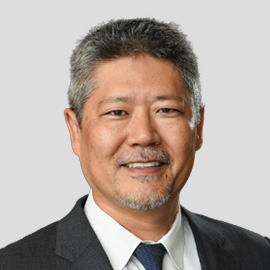
Ed Chinchoy
- View all topics (PDF)
Featured Companies
Device to treat stress urinary incontinence in women.
Elidah created a medical device to help women with stress urinary incontinence - the inability to control the urge to urinate - a condition which impacts about one in three women.
To learn more visit: https://www.elidah.com/
More featured companies
- Sonavex, Inc.
- Lapovations, LLC
- CACTUS MEDICAL,LLC
- FORCAST ORTHOPEDICS INC
- iSono Health, Inc.
Ready to Learn More?
We invest up to $2 million in seed funding and take zero equity. We’re looking for companies that are transformative, high-risk, have a market pull, and are scaleable.
Get Started Today
- U.S. Department of Health & Human Services

- Virtual Tour
- Staff Directory
- En Español
You are here
Grants & funding.
The National Institutes of Health is the largest public funder of biomedical research in the world. The NIH invests most of its nearly $48 billion budget in medical research seeking to enhance life and to reduce illness and disability. NIH-funded research has led to breakthroughs and new treatments helping people live longer, healthier lives, and building the research foundation that drives discovery.
three-scientists-goggles-test-tube.jpg

Grants Home Page
NIH’s central resource for grants and funding information.
lab-glassware-with-colorful-liquid-square.jpg

Find Funding
NIH offers funding for many types of grants, contracts, and even programs that help repay loans for researchers.
calendar-page-square.jpg

Grant applications and associated documents (e.g., reference letters) are due by 5:00 PM local time of application organization on the specified due date.
submit-key-red-square.jpg

How to Apply
Instructions for submitting a grant application to NIH and other Public Health Service agencies.
female-researcher-in-lab-square.jpg
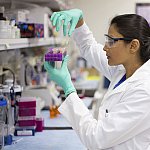
As you begin your journey in search of NIH grant funding, learn about the structure of NIH and why it’s important to successfully navigate the grants process.
binder-with-papers-on-office-desk-square.jpg

Policy & Compliance
By accepting a grant award, recipients agree to comply with the requirements in the NIH Grants Policy Statement unless the notice of award states otherwise.
blog-key-blue-square.jpg

Grants News/Blog
News, updates, and blog posts on NIH extramural grant policies, processes, events, and resources.
scientist-flipping-through-report-square.jpg

Explore opportunities at NIH for research and development contract funding.
smiling-female-researcher-square.jpg

Loan Repayment
The NIH Loan Repayment Programs repay up to $50,000 annually of a researcher’s qualified educational debt in return for a commitment to engage in NIH mission-relevant research.
Connect with Us
- More Social Media from NIH

An Introduction to U.S. Federal Funding for Healthcare Innovation
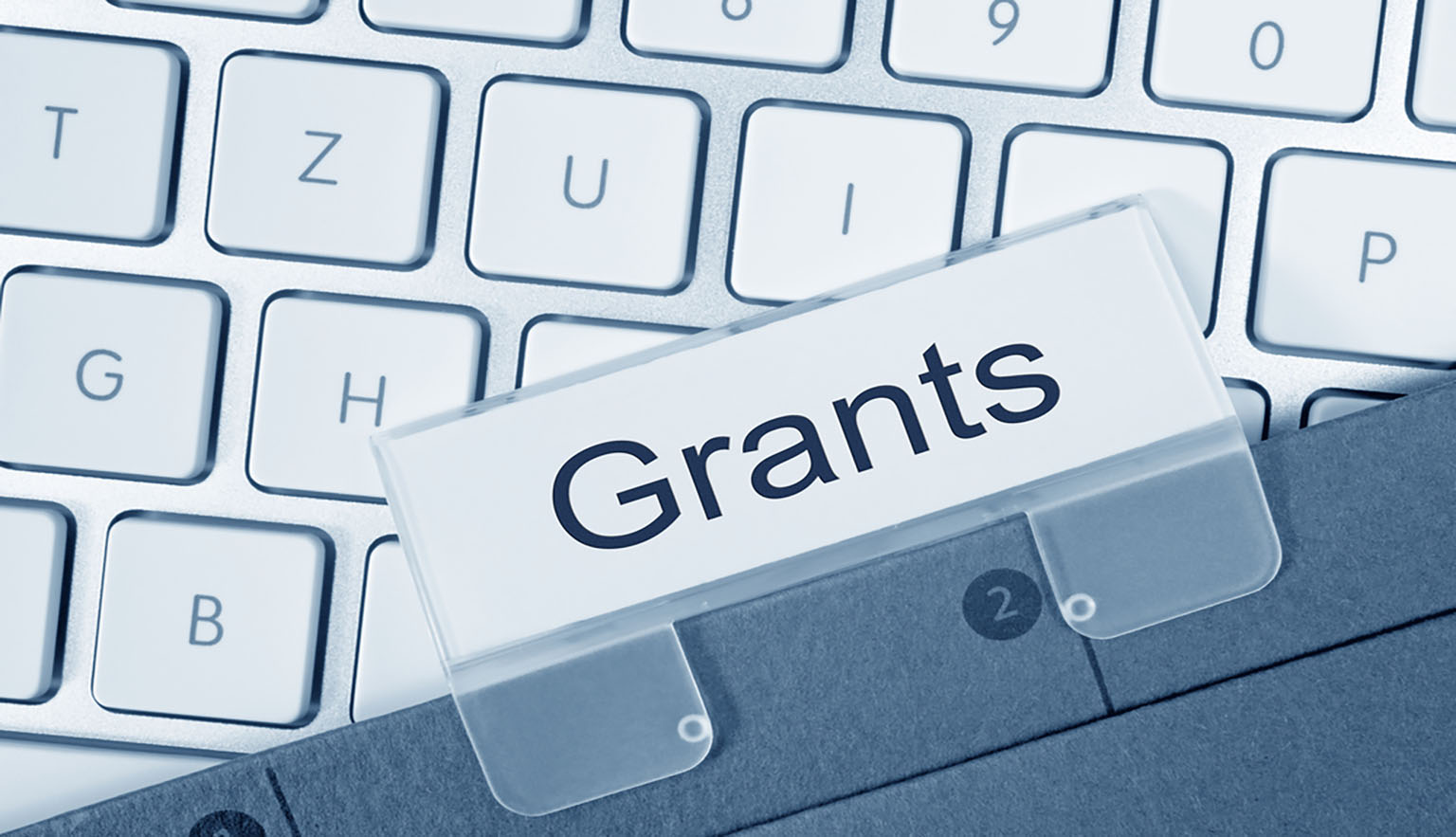
September 8, 2021 – By Amrika Ramjewan, Principal Strategist – Mayo Clinic Innovation Exchange
Each year, U.S. government agencies with extramural research and development (R&D) budgets invest in federal funding programs designed to stimulate technological innovation and foster entrepreneurial activity. Coordinated by the U.S. Small Business Administration (SBA), these federal funding programs are accessible via a competitive award process through major research agencies such as the National Institutes of Health (NIH), Department of Defense (DoD), and National Science Foundation (NSF).
Entrepreneurs seeking to advance research and bring their innovations to market have the opportunity to compete for these funds and access a wealth of support from these agencies. Through 2019, over 179,000 awards have been granted totaling over $54.3 billion in investment by the federal government.
Jon Zurn, director of the Strategic Funding Office for Research at Mayo Clinic , spoke with the Exchange’s members about the variety of federal funding options available, how the non-dilutive granting process works, and the resources available to entrepreneurs.
Q: Can you share an overview of the types of federal funding programs available to entrepreneurs?
JZ: The U.S. Small Business Administration (SBA) coordinates non-dilutive, research innovation funding programs to assist entrepreneurs and small businesses with planning and conducting R&D activities and advancing their products and technologies through validation and commercialization. Two types of grants are available including the Small Business Innovation Research (SBIR) award and the Small Business Technology Transfer (STTR) award . These awards focus on R&D, stimulating technological innovation, and increasing private-sector commercialization of innovation derived from federal R&D funding.
SBIR funds are offered by 11 federal agencies and divisions within these agencies including the National Institutes of Health (NIH), Department of Defense (DoD), National Science Foundation (NSF) and the Environmental Protection Agency (EPA), among others. The funds are intended to assist small businesses with conducting principal investigator-led R&D on their own or with subcontractors, with the expectation that a majority of the work will be completed by the small business.
STTR funds are offered by five federal agencies, including the Department of Health and Human Services (HHS, and its constituents NIH, FDA, CDC, and ACL). The funds are intended to facilitate collaboration and foster technology transfer between small businesses and non-profit research institutions. The government recognizes that small firms often don’t have the research resources and infrastructure to complete early-stage R&D, and that there is tremendous value in partnering with large, research-intensive institutions to bring innovations to market.
Both awards are non-dilutive sources of funding, meaning that the government takes no interest or equity stake in your business. Recipients of these funds are expected to fulfill the reporting requirements laid out by the awarding federal agency, and all intellectual property is owned by the small business (except in special circumstances).
Q: What can the funds from these programs be used for?
JZ: SBIR and STTR grants are intended for performing R&D. Purchasing equipment, commercializing a technology that has already been developed, or pursuing a low-risk idea that requires capital will typically not be funded by these programs. Before applying, it’s best to consult with an agency’s program officer to make sure your idea meets the R&D criteria.
Award solicitations for these grants, called an Omnibus or Parent Announcement, are published by the NIH three times each year — in January, April, and September. Each participating NIH institute and center (I/C) has its own research priorities. It is important to understand how these priorities align with your projects. Additionally, targeted solicitations for specific needs may also be published, but these are not released on a regular cycle. Other federal agencies tend to post opportunities throughout the year.
Funding for each award is focused on distinct phases. In Phase I, the objective is to establish technical merit, feasibility and commercial potential prior to seeking Phase II funding. Phase I SBIR/STTR awards normally do not exceed $150,000 in total over six months (for SBIR), or over one year (for STTR) — with some exceptions.
In Phase II, the funding is based on the results achieved in Phase I, with the possibility of funding through Phase IIB. Phase II awards normally provide up to $1,000,000 in total over two years. However, exemptions may even be granted for approved research areas that may extend the award ceiling up to $1.7 million for Phase II.
Phase III research on the path of commercialization is not funded by SBIR/STTR. However additional, late stage development federal dollars are available through programs such as the NIH’s Commercialization Readiness Pilot (CRP).
Q: Who is eligible for these funds?
JZ: Small, for-profit business organizations that are U.S. concerns, and operating primarily in the United States with a U.S.-based location are eligible to apply for SBIR and STTR dollars. The small business, including its affiliates, must have no more than 500 employees, and must be more than 50% directly owned and operated by one or more individuals who are citizens or legal permanent residents of the United States. Small businesses that are subsidiaries of larger companies are not eligible.
However, if a small business is majority-owned by multiple venture capital operating companies (VCOCs), hedge funds, or private equity firms that each meet small business size criteria, it is eligible to apply for an NIH SBIR funding opportunity. These grants are also not designated for large institutions, universities, or non-profit organizations.
Foreign (non-U.S.-based) firms may access SBIR and STTR dollars through two avenues — either as a subcontractor to a U.S.-based firm, or by having a U.S. location where the work for which the funds being sought will be completed. That is, all grant dollars must be spent in the U.S. For example, if a foreign firm owned by a U.S. legal permanent resident were to receive a three-year grant for $100,000, all of the funds must be spent in the U.S. to complete the research.
For SBIR grants, subcontracting is limited to 33% of the total effort in Phase I of the project, and 50% of the total effort in Phase II. Also, the principal investigator (PI) leading the research must be employed by the small business seeking the funds. This means that the PI will be unable to work elsewhere during the project period, as more than 50% of their time must be spent in service to the small business.
For STTR grants, 40% of the work must be completed by the small business, and 30% by the collaborating research institution (RI). The remaining 30% may be completed by the small business, or outsourced to either the RI or another subcontractor. The PI may be primarily employed by either the small business or the RI. Co-investigators may be affiliated with either the small business, or the RI, or they may serve as consultants — however, this is dependent on any restrictions that may be set by the funder.
Any organization located in the U.S. that is a university, non-profit institution, or contractor-operated federally funded research and development center (FFRDC) is eligible to collaborate with small firms on STTR projects.
Q: What resources are available to entrepreneurs and small businesses interested in seeking funding through these programs?
JZ: There are a tremendous number of online resources , tutorials , as well as local SBA affiliates in every state. Many agencies provide applicant assistance programs for businesses interested in applying for SBIR and STTR grants, and technical support staff provide good, free advice — remember, they are there to help.
The National Institute of Allergy and Infectious Diseases (NIAID) publishes sample applications , as well as many useful templates for preparing proposals. Agencies such as the NIH and NSF offer Innovation Corps (I-Corps™) programs, which offer more in-depth support, including funding, mentoring, and networking opportunities on a team’s journey towards commercialization.
The realm of finding funding and development opportunities can seem complicated, but once you’re in it, the ecosystem is quite exciting, with many resources available to help you navigate.
Q: What breakthrough innovations in healthcare delivery or technology excite you most?
JZ: Artificial intelligence (AI) is already a burgeoning field and seems to be growing daily. It’s being applied in nearly every corner of biomedical research and healthcare, from mechanistic studies to improving staffing workflows. It’s also ripe for multidisciplinary collaboration, including small businesses with specialized skills or AI technologies.
Federal agencies are increasing their AI investments, including a plan to stand up an entirely new $6.5 billion office at NIH, the Advanced Research Projects Agency for Health (ARPA-H) . The goal is to build high-risk, high-reward capabilities (or platforms) to drive biomedical breakthroughs. This includes achieving viable products and market feasibility. Undoubtedly, small businesses will be welcome in this new arena.
I’m excited, too, about microbiome research, which is an interest area to not just the NIH, but 15 other federal agencies as well. The biome is another new frontier in medicine that we’re now learning plays a role in numerous diseases. Like AI, we’re finding application of microbiome research in a wide span of applications, including unlocking molecular secrets, developing biomarkers, creating therapeutics, and improving lifestyles.
This is such an exciting time to be involved in medical research.
Call for Healthcare Innovations
Are you developing an innovative healthcare technology? Contact the Mayo Clinic Innovation Exchange to learn how membership can help bring your company or your idea closer to patients.

Top 25 Medical Device Development Grants for Small Businesses
Table of Contents
Alice Vo Edwards , Translational Science R&D Consultant on Kolabtree, provides a comprehensive list of medical device development grants and funding options for small businesses in the US and UK.
A non-stop challenge that small businesses have is securing grants. It can be stressful and time consuming trying to find grants that are relevant to your business, and also currently accepting applications. To help make the process easier and quicker for you, we’ve curated this list of twenty five grants that are currently available to small businesses developing medical devices in the United States and Europe.
The National Science Foundation (NSF) Seed Fund provides Phase I and Phase II funding that can total up to $1.25 million dollars in funding to small businesses. All work must be conducted in the United States and the company must be owned by 50% or more U.S. citizens. One perk of this program is that you must submit (and have approved) a short, 3 page pitch, before submitting your full proposal. Another is that you don’t have to have a company already set up: you can pitch your idea before you even have a corporation setup. I’ve participated in calls with some of the program directors on what makes a good pitch, and they told me that a significant portion of the companies they fund are brand-new startups. After submitting the 3 page pitch, you will need to get set up as a legal U.S. corporation that meets their ownership guidelines, in order to submit a full proposal. Also, they have rolling deadlines throughout the year.
The Michigan Economic Development Corporation has established a Michigan Strategic fund to spur economic growth within the state of Michigan. As part of this initiative, the Michigan Business development program provides grants, loans, and other economic assistance to businesses for projects that will create economic growth in Michigan. This is a highly competitive grant. Criteria of a competitive business include those that will create jobs, provide investment, and that are expected to ultimately provide Michigan with a net return on their grant. With the demand for medical, prevention, and related health oriented businesses, small businesses creating medical devices have a good chance of being perceived as competitive as part of a strategic plan to increase the export of medical devices and other health oriented products and services from the state.
Oxfordshire Business Support (OBS) created the Elevate Programme consisting of two funds for Oxfordshire SMEs to fund projects and activities related to job creation, start-up, and growth. The first fund awards start-up businesses, which have been established 12 months or less, a minimum of £1,000 up to the maximum amount of £3,000. The second fund awards growing businesses, established longer than 12 months, a minimum of £1,000 up to £8,000 maximum. To apply for this grant, SMEs must be based in an eligible sector of Oxfordshire, England and have sufficient funds to match the requirements. These funds can be utilized for capital and revenue projects; to increase sales through consulting, market research , and advertising; to improve business processes, performance, and profitability; and to create new jobs within your company. This is a highly competitive grant competition with an aim to provide flexible capital and/or revenue to assist SMEs, ultimately leading to business growth and job creation in Oxfordshire, England.
With the recent coronavirus outbreak, we have seen major shifts in the global economy and whether or not businesses have the ability to adapt and overcome new challenges. Google has announced an $800+ million commitment to relieve SMBs, health workers and organizations, and governments worldwide in addressing these new challenges. Google.org is already providing $15 million in cash grants to NGOs to assist SMBs in this time of hardship. There are several ways to receive assistance from Google, whether it is an ad grant award, access to capital, Google Ads credits, Google Cloud credits, or academic and research grants. Google is also offering direct financial support and expertise to increase production of personal protective equipment and lifesaving medical devices. Their commitment to help communities across the globe is aimed at navigating present and future challenges.
The goal of the COVID-19 grant fund through UK Research and Innovation (UKRI) is to provide funding of short-term projects for UK based companies directly correlated with the coronavirus outbreak. Proposals from companies and organizations must demonstrate the ability to address and mitigate effects on economies, cultures, environments, communities, and/or health during the length of the project. This opportunity is perfect for small businesses developing medical devices, because they support the manufacturing and adoption of interventions addressing the COVID-19 outbreak now and for future utilization. If your company is based in the UK but you have partners or products from outside the UK, this grant does allow international co-investigators in some instances.
The Citizen Science Collaboration grant will support multidisciplinary research collaborations that spread citizen science methods into new fields of research and involve citizens to address societally-relevant issues. This is a single round funding scheme for projects lasting one to three years. Lead applicants can be from any discipline and must be of lecturer level or equivalent. This grant supports UK based applicants and awards up to £1.5 million. They are particularly interested in funding collaborative projects that will allow researchers who have no prior experience in using citizen science methods to develop their expertise, and projects that extend citizen science methods into new research disciplines. Citizen science is defined by Wikipedia as “scientific research conducted, in whole or in part, by ameteur (or nonprofessional) scientists. This is a great opportunity to consider how your medical device might benefit from Citizen science. For example, when users of a medical app input their personal data and allow it to be shared for larger data analysis and predictive projects, these users are considered citizen scientists. How could your medical product benefit from developing citizen scientists?
Multiple grants for research applications pertaining to the scope of Technology Touching Life available through a group of three research councils (BBSRC, EPSRC and MRC) in the UK. There are many grants available, one in particular is funded by the BBSRC and is relevant to technology development for the biosciences. This area of focus encourages development of new bioanalytical and/or biological tools and technologies, and if awarded, the Research Councils provide funding on the basis of 80% of the full economic cost. To help applicants identify the most appropriate lead research council to submit a proposal, UKRI recommends submitting a query form to the TTL inbox.
Also read: How to write a winning grant proposal: Expert tips
The Industrial Strategy Challenge Fund is part of the government’s long-term plan to raise productivity and earning power in the UK. This fund is a core pillar in the government’s commitment to increase funding in research and development by £4.7 billion over 4 years to strengthen UK science and business. They invest in highly-innovative businesses to address the biggest industrial and societal challenges today. SMBs could submit medical device funding proposals addressing one or more of the following areas: accelerating detection of disease, commercialization of quantum technology, and manufacturing made smarter.
Innovate UK, part of UK Research and Innovation, calls for UK registered businesses to apply for funding in collaborative research and development (CR&D) projects related to healthy aging. Focus areas include industrial research and medical devices; specifically robotics, augmented or artificial intelligence , software as a medical device, wearables, diagnostics, imaging, data analytics, sensors, apps, and other medical devices that promote healthy ageing. Applicants can apply for a total grant of up to £500,000 for each project, not to exceed £2 million. Medical device SMBs have a chance to develop new products, processes, or services that lead to improvements in existing areas.
UK Research and Innovation (UKRI) invites applications for individuals from any discipline wishing to spend up to 36 months (full or part time) on secondment (this is a type of short-term contract/employment) in the biomedical sciences sector. This grant would allow a medical device small business to receive funding to pay for the secondment of a biomedical science expert to work on projects within your medical device company. The objectives of this grant call for a medical device small business are to create porosity between sectors by enabling career mobility; boost the skills, knowledge, and career development of people; intensify knowledge exchange between the biomedical industry and academia; add value to the Biomedical Sciences sector and the UK economy by increasing productivity. This grant can total up to £300,000 per secondment (up to 36 months).
Each year the Department for International Trade (DIT) and TAP trade challenge partners agree which overseas trade shows they will provide grants for UK businesses to attend. The grants must not exceed the business’s own expenditure on direct exhibiting costs, and in some cases, grants may also be agreed to help towards direct conference costs where the purpose of attending is to promote the business (ie conference fees and costs of preparing conference material). Grant awards can total between £500 and £2,500. These trade shows include some of the most important events in each sector’s calendar, where the best opportunities exist for UK organisations to access. Businesses take part as a group, led by the trade challenge partner for that trade show.
Got a business in mind or want to explore an idea? The Prince’s Trust works with 18 to 30-year-olds living in the UK to develop big ideas into reality. From training and mentoring support to funding and resources, they are committed to helping you become the best entrepreneur you can be. This free Enterprise programme is broken down into three stages: information session, workshop, build your business. Before the launch of your new medical device business, you will present your business plan to the Business Launch Group. It is a positive experience designed to ensure there are no weak points in your plan, and the group may even provide additional start-up financial support, if needed.
The Greater Lincolnshire Growth Fund has over £2,925,000 of grant funding available. This funding is targeted at supporting Small and Medium Enterprises (SMEs) and larger businesses within the Greater Lincolnshire area for larger transformational projects. This might be a good fit for a medical device company that is looking to expand its operations, set up a warehouse, or establish a facility to manufacture its medical devices.
This UK grant is to promote new jobs or significant sales of product, within the Greater Lincolnshire area. If you don’t don’t think you qualify for the larger projects funded through the Greater Lincolnshire Growth Fund or feel overwhelmed by the prospect of applying for a large grant, this small grant may be right for your first attempt. Grants range from £1,000 – £5,000 and can contribute between 40% and 50% of your overall costs. If you think this may be of interest to you, the next step is to discuss the activity you are requesting funding for with a Business Lincolnshire adviser. One potential use of this grant that those who aren’t currently based in Greater Lincolnshire could investigate is requesting funding to test developing partnerships and market with local businesses to increase sales of your medical device within the Greater Lincolnshire area.
The United States Air Force Office of Scientific Research is funding awards of between $250,000 and $2,000,000 for medical photonics devices. While this is a military grant, this proposal does not require security clearance, as this is considered an unclassified proposal for technology that can be used in helping treat soldiers. While this funding can be applied for by small businesses, it is recommended that a small business applicant proposal include information on how the project will be completed by or incorporate relationships with a team that includes university-based medical institutions, biomedical scientists, engineers, etc. This would be critical for future ongoing funding as they intend that future phases be focused on institutional settings, clinical practice, and in working products. This proposal also requires experience collaborating with military medical centers, or experience in military medical or combat care. If you don’t have military experience yourself, consider discussing your product or partnering with a vetaran, or discuss your product with one of the U. S. Military Research Organizations.
It’s not often that mental health grants have no upper limit, but that is exactly the case for this grant opportunity. The National Institute of Mental Health (NIMH) is providing funding of any amount, large or small, to small businesses and entities of all sizes (including those outside of the United States). Medical device proposals being sought are for projects that will either 1) develop novel brain stimulation devices or 2) significantly enhance, by means of hardware/software improvements, the effectiveness of brain stimulation devices that are currently U.S. Food and Drug Administration (FDA)-approved or cleared. One great part of this grant is that it is heavily research oriented, so you can propose a hypothesis-driven research project.
The National Center for Complementary and Integrative Health (NCCIH) in the United States is accepting proposals for Small Business Technology Transfer Grants for medical device developers to either 1) monitor biologically- or behaviorally-based processes applicable to mind and body interventions or 2) be used to assist in optimizing the practice or increasing the efficacy of mind and body interventions. This is a great opportunity for a medical device developer to partner with a mind/body intervention specialist to adapt or validate your medical device, or propose development of a new medical device that can be used in this capacity. The $400,000 in funding is only available to small businesses based in the United States, but some foreign components may be allowed. Clinical trial is optional, so you can decide whether you want to propose developing something new, or requesting funding for a clinical trial to validate something you’ve already developed, for use in this context.
The United States National Institute of Diabetes and Digestive and Kidney Diseases (NIDDK) and National Cancer Institute (NCI) are funding a phased innovation award for medical tools and devices that can continuously monitor certain types of health data. Types of health data they are interested in funding medical device research on include nutrients, metabolites, metabolic signals, microbiome, and circadian metabolism. The National Cancer Institute also encourages submissions related to measuring cancer-related circulating metabolites on a continuous basis, for consideration in treatment of cancer patients. They plan to fund an initial phase of up to $200,000, with the potential for additional phases based on innovation that performs well during the first phase.
If you’re frustrated with grants where you have to compete against larger companies, are working on or interested in developing medical devices related to dentistry, and are based in the United States, this grant is for you. The National Institute of Dental and Craniofacial Research is funding a grant to support innovation, optimization, and customization of the medical technologies used in digital dentistry. This funding is for up to $1.5 million in the second phase stage with no minimum on the amount they might be willing to fund for Phase 1 exploratory projects. There are multiple types of medical devices they are interested in encouraging small businesses to submit their proposals in. These include medical device development of digital imaging, novel image processing capabilities for dental radiology, and medical devices that use or integration of 3-dimensional (3D) additive manufacturing (e.g., 3D printing) with imaging tools which can support more timely delivery of dental products.
The National Institutes of Health are funding up to $500,000 for the development of medical devices that can be of assistance in treating or managing gastrointestinal or digestive disorders of the stomach. A couple examples of the types of medical devices that are currently being sought for funding consideration include smart pills that can be swallowed, or devices that assist in measuring the microbiome within the gastrointestinal tract. While funding is available to small businesses, nonprofits, and other US-based entities, keep in mind that a clinical trial is required as part of this grant opportunity.
Funding of up to $500,000 is available for medical device technology that can support those with disabilities or who need rehabilitation support in the United States. The National Institute on Disability, Independent Living, and Rehabilitation Research anticipates providing 4 awards of this amount. If this grant is of interest to you, contact them immediately as the application period is currently set to close March 26, 2020. If you have missed this deadline, it is still worth taking a look at, so you can become familiar with other grants that this organization makes available. In the United States, many of these federally funded national grants are re-opened or extended for multiple periods. Also, it is possible that with the challenges related to COVID-19, grantors may be updating their solicitation with expanded deadlines.
Small businesses developing (or interested in developing) medical devices that can improve human performance and army readiness for the United States Army mawant to consider reviewing the U.S. Army Research Institute for the Behavioral and Social Sciences Broad Agency Announcement. This announcement is currently listed as being open to new submissions through 2023. Contact information is provided so that you can easily send in a short blurb on your topic and request confirmation that it is something of interest before completing a full proposal. This funding opportunity is available to small businesses of multiple types including for-profit, not for profit, educational, and commercial organizations. It also allows submission by foreign organizations (those based outside of the United States). No cap is specified on the funding amount so if you need a large amount of funding, this may also be a viable option for you.
The National Institute of Neurological Disorders and Stroke (NINDS) is providing funding for clinical trials of relevant medical devices, including surgical or diagnostic devices, or rehabilitative devices. This grant is designed to be provided by a small business concern, but can include partnership with other entity types to assist your small business with performing the clinical trial. Phase 1 funding is between $150,000 and $225,000. Phase II and Fast Track Proposals can be up to $1.5 million.
The U.S. government is funding medical device research of $1.5 million and up, for a U.S. based small business to develop a non-invasive, discreet wearable medical device that can monitor blood alcohol levels in real time. Initial phases do not require clinical trials for initial product design and development, and no partnership with external research or educational organizations is required.
The HEAL Initiative through the National Institute of Health is providing almost $2 million in funding through Phase 1 and Phase 2 grants, through an STTR program. This program provides fundings for small businesses developing medical technologies, tools, or devices related to pain management. This grant requires that the small business partner with a research institution or educational institution that is one of the approved partner categories to be funded through the grant to assist your business in performing clinical trial(s).
These grants are just a few of the options that may be available to you as a small business in the medical device development industry. We encourage you to check back, as we hope to update this list, as other grants become available. Reviewing the organizations that are providing these grants may also lead you to additional opportunities as they become available in the future.
Need help with a medical device grant proposal or regulatory compliance ? Work with experienced scientists and industry experts on Kolabtree. View experts: Grant proposal writers | Medical device consultants | Regulatory writers

Unlock Corporate Benefits • Secure Payment Assistance • Onboarding Support • Dedicated Account Manager
Sign up with your professional email to avail special advances offered against purchase orders, seamless multi-channel payments, and extended support for agreements.
About Author
Ramya Sriram manages digital content and communications at Kolabtree (kolabtree.com), the world's largest freelancing platform for scientists. She has over a decade of experience in publishing, advertising and digital content creation.
Related Posts

Ensuring Reproducibility in AI-Driven Research: How Freelance Experts Can Help in Biotech and Healthcare

How a Freelance Expert Can Enhance Statistical Analysis and Visualization for Pre-Clinical Study Reports

The Definitive Guide on How to Hire a Food Scientist
Leave a reply cancel reply.
Save my name, email, and website in this browser for the next time I comment.
- Skip to main content
- Skip to FDA Search
- Skip to in this section menu
- Skip to footer links

The .gov means it’s official. Federal government websites often end in .gov or .mil. Before sharing sensitive information, make sure you're on a federal government site.
The site is secure. The https:// ensures that you are connecting to the official website and that any information you provide is encrypted and transmitted securely.
On Oct. 1, 2024, the FDA began implementing a reorganization impacting many parts of the agency. We are in the process of updating FDA.gov content to reflect these changes.
U.S. Food and Drug Administration
- Search
- Menu
- FDA Organization
- Center for Devices and Radiological Health
- CDRH Innovation
Activities to Support Medical Device Innovators
CDRH Innovation has a two-fold approach to increase patient access to innovative medical devices developed by small businesses and start-ups:
- Increase outreach to these innovators, and
- Increase training opportunities for FDA staff to learn about the unique challenges start-ups face.
Early Regulatory Assistance for Medical Device Innovators
If you are in the process of developing an innovative medical device , CDRH offers the following two meeting options, as part of the FDA's Q-Submission Program , to answer questions about the marketing of your specific device:
- Informational Meeting – You may request a meeting to share information with the FDA and to provide an overview of ongoing device development or help familiarize the review team with new devices that have significant differences in technology from currently available devices.
- In addition to traditional device design questions, medical device innovators are encouraged to ask general quality system questions including manufacturing or production questions during their Pre-Submission meeting. The Quality System regulation (21 CFR Part 820) applies to finished device manufacturers who intend to commercially distribute medical devices and covers design, manufacturing, and other quality system activities.
CDRH also has two additional programs which may be helpful for developers of innovative medical devices:
- Breakthrough Devices Program – The Breakthrough Devices Program is a voluntary program for certain medical devices and device-led combination products that provide for more effective treatment or diagnosis of life-threatening or irreversibly debilitating diseases or conditions. Manufacturers can expect increased interaction with the review team and prioritized review of the marketing submission.
- Total Product Life Cycle Advisory Program (TAP) – The voluntary TAP Pilot is intended to help ensure that U.S. patients have access to high-quality, safe, effective, and innovative medical devices first in the world for years to come by promoting early, frequent, and strategic communications between the FDA and medical device sponsors.
If you have questions about the regulatory process for medical devices, contact the Division of Industry and Consumer Education (DICE) at [email protected] , 800-638-2041 or 301-796-7100. For general regulatory information, please visit Device Advice and CDRH Learn .
Medical Device Coverage Initiatives
CDRH established the Payor Communication Task Force (PCTF) to facilitate communication between device manufacturers and payors to potentially shorten the time between FDA market authorization and coverage decisions. By communicating earlier, manufacturers may design their clinical trials to produce the data required for market authorization and for coverage determinations, which may expedite patient access. The PCTF facilitates discussions with payors participating in Parallel Review and the Early Payor Feedback Program. For details, see Medical Device Coverage Initiatives: Connecting with Payors via the Payor Communication Task Force .

Grants and Other Funding Opportunities
CDRH has a Small Business Innovation Research (SBIR) grant program for medical device innovators. The SBIR programs encourage domestic small businesses to engage in research and development with the potential for product commercialization. Each year, CDRH’s interest areas are announced in the SBIR Omnibus/Parent Grant Solicitation. For more information, see Program Description and Research Topics Document in the SBIR/STTR Omnibus section .
The National Institutes of Health’s Small Business Education and Entrepreneurial Development (SEED) Office acts as a key facilitator and resource for small business funding for the Department of Health and Human Services (HHS). For more information, see Small Business Education and Entrepreneurial Development (SEED) .
HHS has other grant opportunities which may help fund medical device development.
Small Business Innovation Research (SBIR), Small Business Technology Transfer (STTR) Grantees, Start-up and Other Grantee Assistance
CDRH Innovation, in partnership with the National Institutes of Health (NIH), pilots programs to assist Small Business Innovation Research (SBIR) and Small Business Technology Transfer (STTR) awardees interested in working collaboratively with CDRH. CDRH helps awardees better understand the regulatory pathway and data requirements for their medical devices, and in the case of NIDA’s “Payor Introductions for NIDA Grantees” program, facilitates connection with payors.
Research Evaluation and Commercialization Hubs (REACH)
Since 2014, CDRH has supported the REACH program , which includes 8 proof-of-concept hubs with 51 universities and technical colleges from 12 states, by helping to facilitate feedback from CDRH experts on innovators proposed regulatory paths. As of July 2023, CDRH has provided feedback to over 300 grantees.
National Cancer Institute (NCI)
In 2019, with the SBIR Development Center of the National Cancer Institute (NCI), CDRH created CARE – Connecting Awardees with Regulatory Experts. This program piloted a new opportunity for CDRH to provide regulatory feedback to NCI’s grantees. As of July 2023, 85 grantees have received assistance.
National Institute for Drugs of Abuse (NIDA)
In 2021, the National Institute for Drugs of Abuse (NIDA)’s Office of Translational Initiatives and Program Innovations (OTIPI) partnered with the FDA on a pilot “Payor Introductions for NIDA Grantees” (PING). As part of this pilot, CDRH educates NIDA program managers about CDRH’s Early Payor Feedback Program. NIDA program managers notify their grantees about this opportunity to interact with payors to potentially create efficiencies in their evidence generation process as well as increase the devices’ opportunities for reaching patients.
In 2022, NIDA published a 3 million dollar funding opportunity to encourage Substance Use Disorder (SUD) innovators to engage with payors through the Early Payor Feedback Program. In 2022, NIDA referrals were around 20% of Early Payor Feedback Program participants.
We will continue to support NIH SBIR and STTR awardees and plan to expand the programs to include various medical device incubators, accelerators, and others to help provide grantees and start-ups with early regulatory feedback and payor connections opportunities.
If you have your own grant program, or incubator/accelerator, and would like to have similar opportunities with CDRH, please contact [email protected] .
CDRH Exchanges with Incubators and Accelerators
CDRH Innovation is partnering with various innovation groups and accelerators to send the FDA’s review staff to shadow start-up companies. Incubators/Accelerators are entities that support early- stage companies in medical device development. CDRH review staff benefit from learning how a regulator’s requests and decisions impact the business decisions of the companies. In addition, the start-ups learn about CDRH's review processes and get a better understanding of the regulatory role.
CDRH is currently looking for additional incubators and accelerator sites to participate in the exchange program. If you would like to join, or have questions about this exchange program, contact [email protected] .

2022 Update: Funding Landscape for Medical Device Startups
No matter how revolutionary technology is, it won’t become the foundation for a successful business without funding. Medical device startups are different from other sectors because they tend to involve research and long clinical trial phases. Medical device startups often have to go back to investors for several rounds of funding.
The earlier your development plans incorporate your positioning from an investor’s point of view, the better. Different sources of funding look for different returns. In this post, we’ll look at different funding sources available for medical devices and an overview update on the fundraising landscape for 2022.
Funding Trends in MedTech and Medical Devices
While research funding includes medical device and non-medical device projects, it provides a useful snapshot of where dollars are flowing in the MedTech space. The National Institutes of Health (NIH) provides an interactive chart show that shows trends in funding for 299 different Research, Condition, and Disease Categories (RCDC). It includes data from 2008 and a projected trend line into 2022. Data reflects support levels based on grants, contracts, and other funding mechanisms used across the National Institutes of Health (NIH), the National Center for Health Statistics (NCHS) at the Centers for Disease Control & Prevention (CDC).
The top 10 research/disease funding areas include Clinical Research, Prevention, Genetics, Neurosciences, Brain Disorders, Infectious Diseases, Biotechnology, Behavioral and Social Science, Cancer, and Clinical Trials and Support.
Medical Device Venture Funding Deals
In October 2021, medical device global venture investment reached $2.7B, an increase of 61% over the previous year, supporting a total of 86 deals. The regional breakout is as follows: North America 46 deals for a total of $1.92B, Asia Pacific 25 deals for a total of $0.49B, Europe’s activity included 12 deals for a total of $23 B, and the Middle East / Africa 3 deals for $0.034B (source)
According to GlobalData’s deals database, as of January 2022, United States medical device industry venture financing deals totaled $1.2B. Of the top 5 investments, three are medical devices, led by $215M venture financing of Enable Injections. Below are brief details of the top 5 investments:
Enable Injections – Investment $215M
Enable Injections is an investigational-stage company developing and manufacturing novel on-body injection systems designed to support improved outcomes, patient experience, and healthcare system value. The company is designing The enFuse® delivery system to enable greater convenience and flexibility for patients and healthcare providers in administering treatments.
Iterative Scopes – Investment $150M
Iterative Scopes is a pioneer in the application of artificial intelligence-based precision medicine to gastroenterology. The company’s goal is to establish a new standard of care for the detection, and ultimately, treatment of gastrointestinal (GI) diseases.
Wheel Health – Investment $150M
Wheel is a white-label telehealth staffing business powering virtual care. Wheel makes it simple for companies to build virtual care services under their brand by providing the infrastructure and clinicians. $150M
Athelas – Investment $132M
Athelas is a remote patient monitoring (RPM) company enabling providers to gather health data from patients at home, improve outcomes and bring in new revenue.
Big Health – Investment $75M
Big Health provides digital therapeutics in the form of safe and effective non-drug options for mental health.
(source for above figures)
2022 Medical Device Categories Trends
Current trends in medical devices reflect the challenges of the recent pandemic as well as the growth of the data cloud and virtual opportunities for remote communication. Areas of interest to investors right now include point of care diagnostic devices, remote monitoring, telehealth, the continued integration of AI, IoT, and medical device cyber security.
Med-tech and high-tech convergence is ramping up, too, in sectors like consumer wearables and software as a medical device (SaaMD). There is also market demand for medical devices and equipment for elective procedures that were deferred during Covid.
This article lists 12 leading medical device startups to track in 2022. One interesting detail is they include the number of funding rounds each startup has received. Device categories include:
- Brain-computer interface- Synchron – 2 rounds
- Durable artificial heart – BiVacor – 3 rounds
- Home diagnostics – TytoCare – 7 rounds and ReperioHealth – 1 round
- Incisionless operations – InsighTec – 10 rounds, most recent amount raised $136M!
- Surgical robot- CMRSurgical – 4 rounds, most recent amount raised $425M
- Targeted cancer surgery – Light Point medical – 11 rounds
- Spinal implants- ZygoFix – 3 rounds
- Magnetic blood purification- Hemotune – 10 rounds
Funding Sources for Medical Devices
There are several different potential sources of funding for medical device startups, ranging from investments to grants.
Venture Capital Funds
Venture Capital requires medical device teams to do extensive due diligence and have deep knowledge of the competitive marketplace. They have clear expectations as to IRR and ROI, pegged to different phases of growth. VC funds raise capital, identify deals, manage the portfolio, then facilitate an exit on an approximate 10-year timetable. During the time companies are looking for funds, VC Fundraising can easily be a full-time job for someone on your startup team.
Corporate Venture Capital
Some large Med-Tech corporations have a VC division to prime the front end of their innovation pipeline. Startups trade some independence and autonomy when working with corporate VCs, but if the startup goals align well with the corporation, it can be a good fit and obviously simplify the path to commercialization
Angel Investor Networks
Angel investor networks allow qualified investors the opportunity to pull their funds and act as active or passive investors. Signal, an investing network for Founders, VCs, and Angels, compiled this list of medical device seed investors. Family offices could be considered a type of Angel investor in that they commit to smaller seed amounts and are often mission-driven based on the interest of the founders.
Special Purpose Acquisition Companies (SPAC)
SPACs are a fundraising tool to raise money through an initial public offering (IPO) to buy another company. Another name for a SPAC is a “blank check company” because the SPAC doesn’t have the trappings of a traditional company.
SPACs have two years to complete an acquisition or they must return their funds to investors, so they tend to move fast. For medical device startups interested in SPAC funding, it makes sense to network within the MedTech SPAC space as early as possible.
In 2022 SPACs are attracting increased attention from regulators that could erode some of the advantages of a SPAC over a traditional IPO.
On March 1, 2022, Elizabeth Cairns from Evaluate wrote this about MedTech SPAC :
“…now is an extremely tricky time to get these deals done. Dismal market conditions might explain why …deals are still struggling to close after more than six months, though greedy valuations might also play a part. Either way, it would be unwise to rule out further terminations.” (source)
The 2022 SPAC advice for medical device startups seems to proceed with caution and be ready for some stiff competition. Even so, SPACs have deadlines to meet or they fail. Money looking for a home can represent an opportunity for the right target. Here is a list of open health tech SPAC deals.
SBIR Grants – Small Business Innovation Research
The Small Business Innovation Development Act of 1982 established the SBIR program. SBIR grants are a viable option for medical device startups. The program requires that the startup must be an organized for-profit company located in the United States. SBIR also requires proof of US residency for founders and owners and that the startup has no more than 500 employees including affiliates.
Charitable Grants
Partnering with and non-profit or foundation may make sense if your medical device solution is aligned with their mission as well. In this post , Kolabtree lists 24 medical device grants.
Incubators and Accelerators
For the most part, incubators are not large investors in startups, but they can provide the critical earliest stage runway funding for program participants. The incubator experience provides another advantage that may lead founders to fund faster than if they were on their own. Anyone who has been through fundraising can tell you that connections matter. Most Incubator/Accelerator programs Include introductions and exposure to potential investors. Here is a list of 11 medical device incubators and accelerators.
Taking the Long View
Fundraising in the medical device industry can span years of development. Successful commercialization of medical devices requires a combination of the right technology at the right time and a viable business model. Knowing what investors look for is an essential first step. Correct positioning at each stage makes a difference in funding timing, which affects the overall commercialization schedule.
If you have any questions about how to attract investors or any other questions related to bringing your device from idea to market, feel free to contact us .
Related Posts

Why Medical Device Startups Need a QMS Early
As a medical device startup, when should you establish your QMS? We make the case for getting started ASAP...

A Guide to ISO 13485 for Medical Device Startups
ISO 13485 Essential information for Medical Device Startups: What is it, why you need it and how to get started.
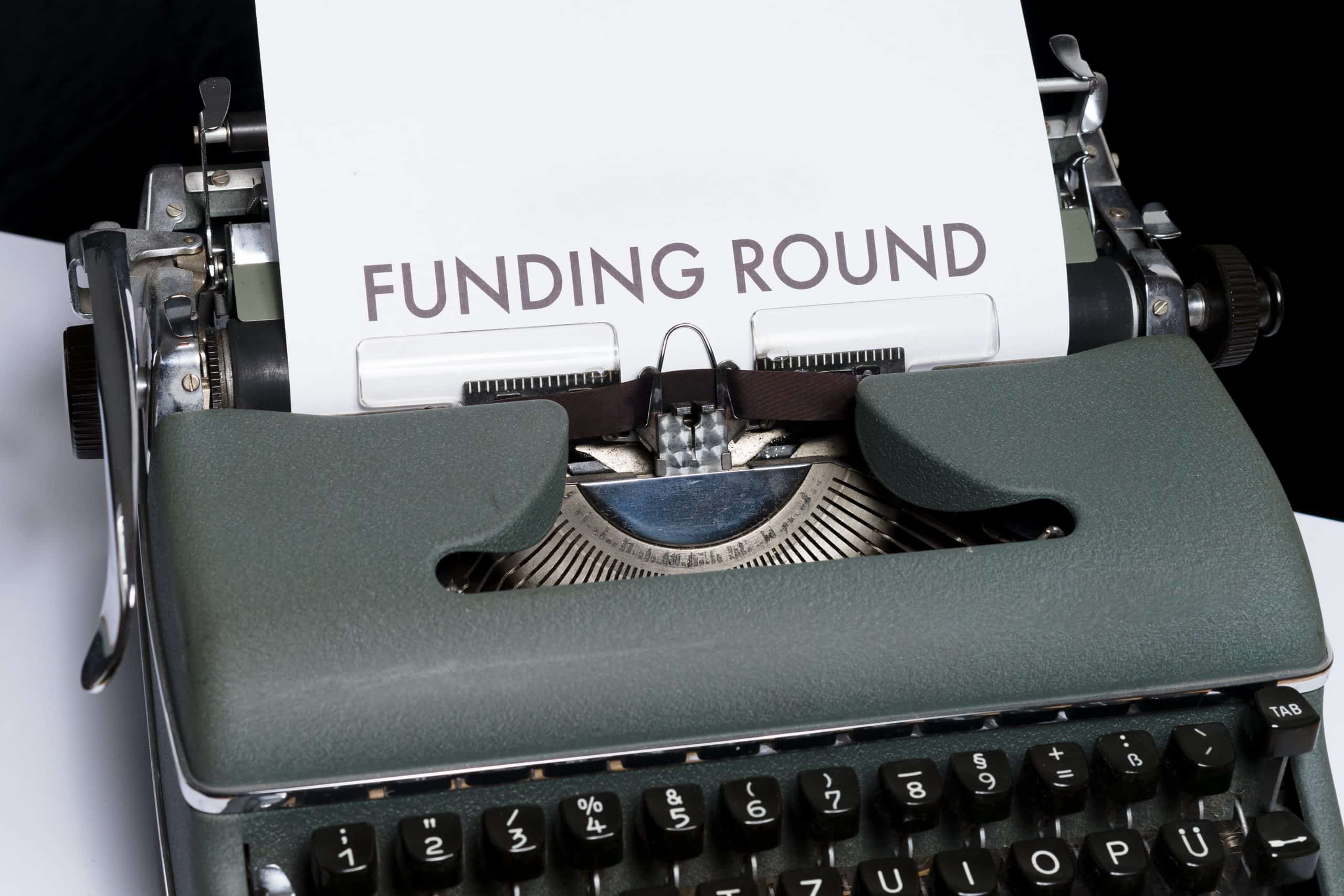
2023 Funding Environment for Medical Device Startups
Medical device startups are an essential industry in the US and worldwide. From improving patient outcomes to high-value job creation, these startups are responsible for driving innovation and advancing healthcare. It’s no secret that we are facing a period of economic uncertainty. Some sources predict the US will enter a recession as the Fed prioritizes

What Is SaMD? A Quick Guide for Medical Device Startups and Investors
What is SaMD? Here’s why both medical device startups and investors should take a second look:
ELEVATE YOUR BUSINESS WITH
The Galen Cloud
The ultimate solution for cloud-connected medical devices – fast, safe, powerful and easy to use, all at an incredibly attractive price.
888-372-9175
Stay up to date on Galen happenings on LinkedIn!
- U.S. Department of Health & Human Services
- National Institutes of Health

En Español | Site Map | Staff Directory | Contact Us
Research Funding
NIBIB funds research in a variety of scientific areas in bioimaging, bioengineering and informatics.
Find Funding
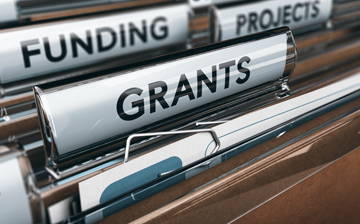
Funding Opportunities
View funding opportunities for:.
- Small Businesses
- Limited-resource Institutions
Funding Notices - Note: some notices serve as a funding opportunity. Search for Notice of Special Interest (NOSI) to view these opportunities
Funding Policies
Data Management and Sharing Policy
Application Guide
NIH Standard Due Dates
NIH RePORTER
Entrepaneurial Finance
Grant Programs
Concept to Clinic: Commercializing Innovation (C3i) Program
Trailblazer R21 Awards
Bioengineering Partnerships with Industry (BPI)
National Centers for Biomedical Imaging and Bioengineering
Interagency Modeling and Analysis Group (IMAG)
Point-of-Care Technologies Research Network
Small Business Programs
Common Grant Mechanisms Supported by NIBIB
Academic Research Enhancement Award - R15
Exploratory/Developmental Grant Program - R21
NIBIB Support for Conferences and Scientific Meetings - R13, U13 .
NIH Research Project Grant Program - R01 .
- Download R01 White Paper Template (MS Word 42.3KB)
- Download R01 White Paper Budget Table Template (Excel Worksheet 12.7KB)
Small Grant Program - R03
Research Enhancement Award Program (REAP) for Health Professional Schools and Graduate Schools (R15)
Scientific Program Areas
Biomedical imaging.
Bio-electromagnetic Technologies Shumin Wang . Ph.D., Program Director
Bioanalytical Sensors Tatjana Atanasijevic , Ph.D., Scientific Program Manager
Image-Guided Interventions Guoying Liu , Ph.D., Program Director
Magnetic Resonance Imaging Robert L. Barry , Ph.D., Program Director Shumin Wang , Ph.D., Program Director
Molecular Probes and Imaging Agents Tatjana Atanasijevic , Ph.D., Scientific Program Manager
Nuclear Medicine Martin Tornai , Ph.D., Program Director
Optical Imaging and Spectroscopy Afrouz Anderson , Ph.D., Program Director Behrouz Shabestari , Ph.D., Director - National Technology Centers Program, Acting Director - Division of Health Informatics Technologies
Ultrasound: Diagnostic & Interventional Randy King , Ph.D., Program Director
X-ray and CT Martin Tornai , Ph.D., Program Director
Bioengineering
Biomolecular Technologies Nichole Daringer , Ph.D., Program Director
Bionics Moria Bittmann , Ph.D., Program Director
Cellular and Multicellular Technologies Tuba Fehr , Ph.D., Program Director
Living Materials Tuba Fehr , Ph.D., Program Director
Manufacturing and Biomanufacturing Tools Jonathan Kulwatno , Ph.D., Program Director
Medical Devices Jessica Falcone , Ph.D., Program Director
Medical Simulators Moria Bittmann , Ph.D., Program Director
Molecular Materials Luisa Russell , Ph.D., Program Director
Nanomaterials Jermont Chen , Ph.D., Program Director
Physiomimetic Materials Jonathan Kulwatno , Ph.D., Program Director
Robotics Moria Bittmann , Ph.D., Program Director
Screening and High-Throughput Tools Jermont Chen , Ph.D., Program Director
Health Informatics Technologies
Digital Health - Mobile Health and Telehealth Tiffani Lash , Ph.D., Program Director
Point of Care Technologies - Diagnostics Tiffani Lash , Ph.D., Program Director
Interdisciplinary Training Programs
Career stages.
Undergraduate
Graduate / Clinical Training
Post Doctoral Training / Clinical Residency
Early Career Investigator
Established Investigator
Grant Types
Individual Fellowships
Career Development Awards
Career Transition Awards
Institutional Grants
Diversity Awards / Programs
Training-Related Programs
NIBIB Scholars Scientific Conference Travel Award | NEW
Academic Research Enhancement (R15)
Research Education Programs (R25)
Supplements
Loan Repayment Program
Support for Conferences and Scientific Meetings (R13)
NIH Initiatives and Trans-NIH Activities
Nih initiatives.
Compliment Animal Research in Experimentation (ARIE) Program
- Notice of Intent to Publish a Funding Opportunity
- Read about NIBIB grantee David Kaplan's winning project on Neuro-immuno-cutaneous human skin equivalent
RADx Tech Innovation Funnel
Big Data to Knowledge (BD2K)
The BRAIN Initiative
Bridge to Artificial Intelligence (B2AI)
Data and Technology Advancement (DATA) National Service Scholars
Developing Medical Devices to Treat Pain (HEAL)
Harnessing Data Science for Health Discovery and Innovation in Africa (DS-I Africa)
Implementing a Maternal health and PRegnancy Outcomes Vision for Everyone (IMPROVE) Initiative
NIH Blueprint for Neuroscience Research
- Blueprint MedTech
NIH Technology Accelerator Challenge (NTAC)
All of Us Research Program
Trans-agency Activities
Collaborative Research in Computational Neuroscience
Cyber Physical Systems
National Robotics Initiative
Smart and Connected Health
Research Resources
New Simplified Review Framework for NIH Research Project Grants
For due dates on or after January 25, 2025 - changes to how most research grant applications will be reviewed. Learn about the new simplified review framework .
For due dates after January 25, 2025 - changes are coming to the application and review of NIH fellowship applications. Learn about these changes .
Go to the policy
Informed Consent for Secondary Research with Data and Biospecimens
This document from the NIH Office of Science Policy includes points to consider and sample language for future use and/or sharing.
Read the document
Grant and Research Misconduct
Learn about different forms of misconduct such as grant scams, fraud, research misconduct, harassment, foreign interference, or peer review violations, and how to report them.
Report a concern

IMAGES
VIDEO
COMMENTS
NSF funds startups. Use a research and development grant to create medical devices.
The National Institutes of Health is the largest public funder of biomedical research in the world. The NIH invests most of its nearly $48 billion budget in medical research seeking to enhance life and to reduce illness and disability.
The MDDT program is a way for the FDA to qualify tools that medical device sponsors can choose to use in the development and evaluation of medical devices.
STTR funds are offered by five federal agencies, including the Department of Health and Human Services (HHS, and its constituents NIH, FDA, CDC, and ACL). The funds are intended to facilitate collaboration and foster technology transfer between small businesses and non-profit research institutions.
Grant Programs. Concept to Clinic: Commercializing Innovation (C3i) Program. The C3i Program is designed to provide medical device innovators with the specialized business frameworks and essential tools for successful translation of biomedical technologies from the lab (concept) to the market (clinic).
A comprehensive list of medical device development grants for small businesses in the US and UK. Includes NSF, NIH, regional and miliitary funding awards.
HHS has other grant opportunities which may help fund medical device development. Small Business Innovation Research (SBIR), Small Business Technology Transfer (STTR) Grantees, Start-up and...
The emphasis is on the development of medical device hardware, software, and models to improve patient health. NIBIB interests include but are not limited to: implantable bioelectronic stimulators and sensors for monitoring and modulating human physiology; wearable sensors for monitoring health vitals
Funding Trends in MedTech and Medical Devices. While research funding includes medical device and non-medical device projects, it provides a useful snapshot of where dollars are flowing in the MedTech space.
New Simplified Review Framework for NIH Research Project Grants For due dates on or after January 25, 2025 - changes to how most research grant applications will be reviewed. Learn about the new simplified review framework .